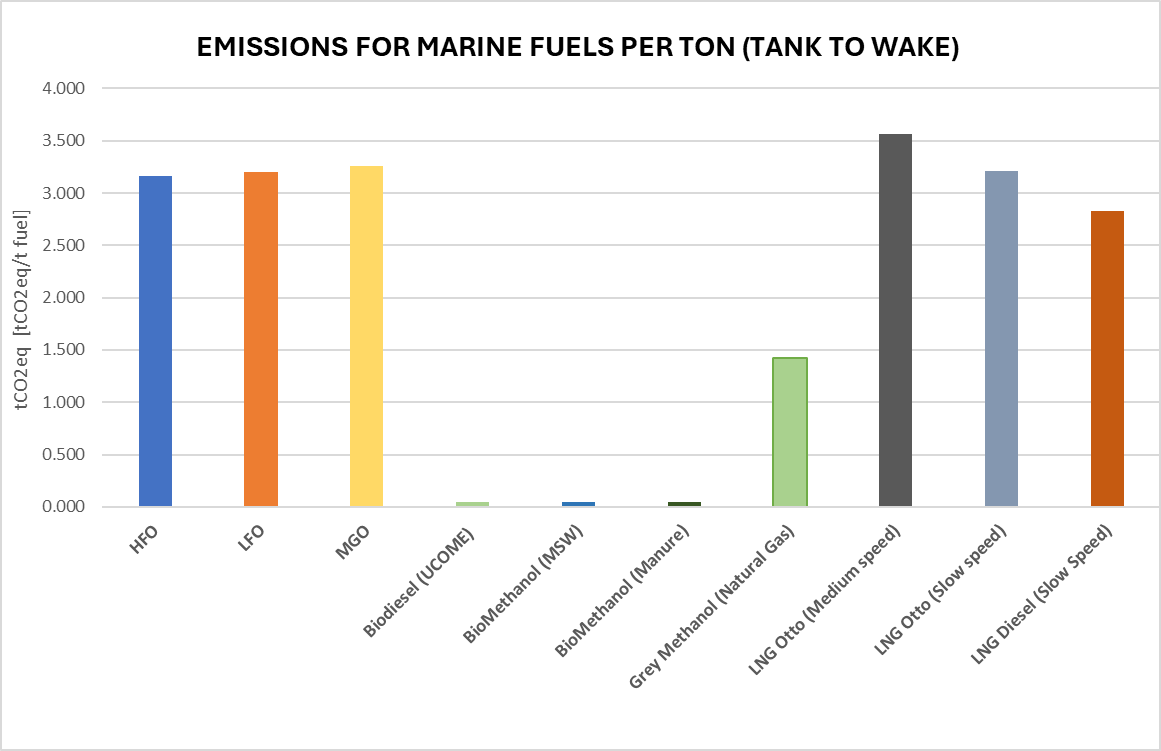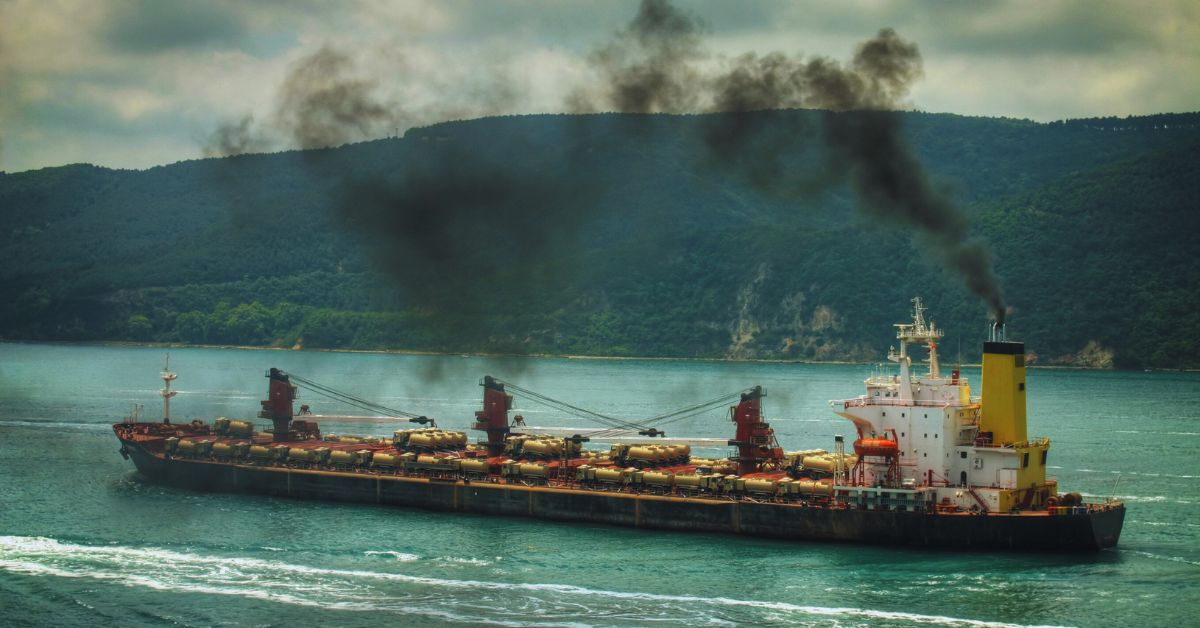Why and How to Decarbonize the Marine Industry?
Drought in Panama Canal, intensifying weather events, and rising sea levels—Why do we hear about such instances quite often in recent times?
What is shipping’s role in climate change?
Can we actually decarbonize the backbone of global trade?
While these are some of the most prevalent questions amongst the maritime community, it’s important to understand the gravity of the climate problem, shipping’s role, and why we should care! Let’s dive in.
No Plan B
Amidst the myriad challenges climate change poses, one stark reality emerges: there is no Plan B for our planet. Paris Climate Agreement states that a 2 degrees Celsius rise in temperature above pre-industrial levels can bring irreversible change, which puts the balance of our environment under threat like never before.
The consequences of inaction are dire, with ramifications that extend far beyond the maritime industry. From food security to human migration, the impacts of climate change are far-reaching and profound.
In the face of such a formidable challenge, we must act decisively and collectively to safeguard the future of our planet.
Maritime’s role
Maritime, often regarded as the backbone of global trade, plays a significant role in the climate emergency.
Accounting for ~3% of total greenhouse gas (GHG) emissions globally, if the maritime industry were a country, it would be the sixth-largest emitter of greenhouse gases in the world.
Adding further to the woes, the industry’s reliance on heavy fuel oils and other high-emission fuels exacerbates its environmental impact.

Therefore, the responsibility of the maritime industry to combat climate change and decarbonize cannot be overstated. With its substantial impact on emissions and reliance on high-emission fuels, the industry faces a pressing imperative to transform its practices and embrace sustainability.
For the world to win the climate battle, shipping must win. It is time for the maritime community to rise to the challenge, prioritize decarbonization efforts, and pave the way towards a cleaner, more sustainable future for all.
But how do we actually decarbonize maritime?
With the motivation to ACT firmly established, we now turn our attention to how we plan and try to achieve it. Well, if you’re looking for a simple answer, here it is: “Abide by the regulations and Mandates”.
To successfully decarbonize and mitigate climate change, industry stakeholders, governments, and regulatory bodies should collaborate and promptly establish a consensus on future regulatory frameworks and greenhouse gas (GHG) mitigation measures.
Such regulations are governed by the International Maritime Organization (IMO), which has set short and long-term goals for the Marine industry, including ambitious net-zero emissions for the maritime industry.
These regulatory goals have been cascaded down to all stakeholders, including shipowners, operators, port authorities, and industry associations. Each entity has a role to play in implementing measures to achieve these targets and drive progress towards decarbonization.
Notably, operational efficiency-driven indices such as the Energy Efficiency Design Index (EEDI), Energy Efficiency Existing Ship Index (EEXI), Carbon Intensity Indicator (CII), and Cargo Ship Greenhouse Gas Emissions Rating (cgDIST) play a pivotal role in ensuring accountability and in-turn achieving regulatory goals.
These indices, applicable to various vessels, gauge how efficiently a vessel utilizes fuel, emphasizing the optimization of cargo-carrying capacity while minimizing GHG emissions. Additionally, countries or a group of countries (EU) have independently implemented regulations that penalize ships for releasing GHGs within their waters(EU ETS, FUEL EU).
These frameworks are often viewed as restrictive and serve a fundamental purpose in guiding behaviour and ensuring responsibility. They establish parameters within which industry players can operate responsibly, reducing emissions and minimizing environmental impact.
Much like traffic police enforce seatbelt usage for our safety, maritime regulations aim to safeguard our planet and future generations. The penalties collected will also be utilized to develop infrastructure for future fuel and carbon abatement technologies.
So, to sum it up in a nutshell, Follow the regulations, folks! (Yeah, we told you 256 earlier)
Having said that, let’s not forget the most crucial piece of the puzzle – us!
Although lines of rules and mandates regulate the industry, it’s us who enforce it. We must ensure we’re ticking all the boxes, following the rules, and pushing for change. Because when push comes to shove, it’s not just the industry that’s on the line – it’s about existence. So, let’s buckle up, folks, and steer this ship towards a brighter, cleaner future!
About the Authors
Kiran Shet, Head of Azolla
Dr Pinaac Makwana, Senior Project Manager
Aditya Srivatsava, Manager – Energy Efficiency & Decarbonization
Together, they bring a wealth of knowledge and expertise to the discourse on maritime decarbonization, contributing to the ongoing efforts to create a cleaner and more sustainable maritime industry.
Do you have info to share with us ? Suggest a correction

About Author
Azolla is a leading provider of sustainable solutions that drive decarbonization in the maritime industry. With a firm conviction that maritime professionals are key agents of change, Azolla endeavours to educate and empower individuals to embrace sustainable practices and lead the industry towards a carbon-neutral future. The writing team comprises of:
Daily Maritime News, Straight To Your Inbox
Sign Up To Get Daily Newsletters
Join over 60k+ people who read our daily newsletters
By subscribing, you agree to our Privacy Policy and may receive occasional deal communications; you can unsubscribe anytime.


BE THE FIRST TO COMMENT